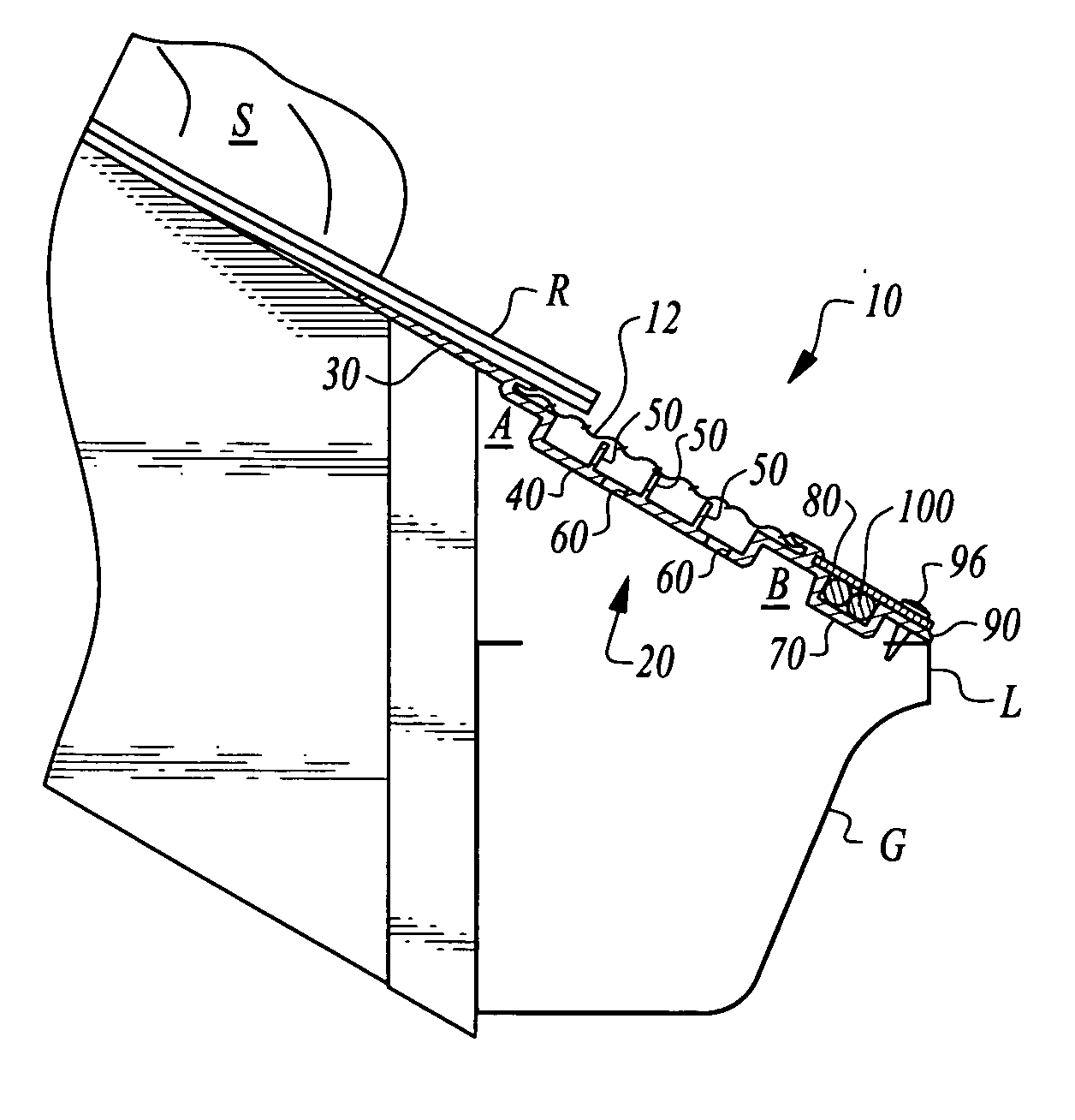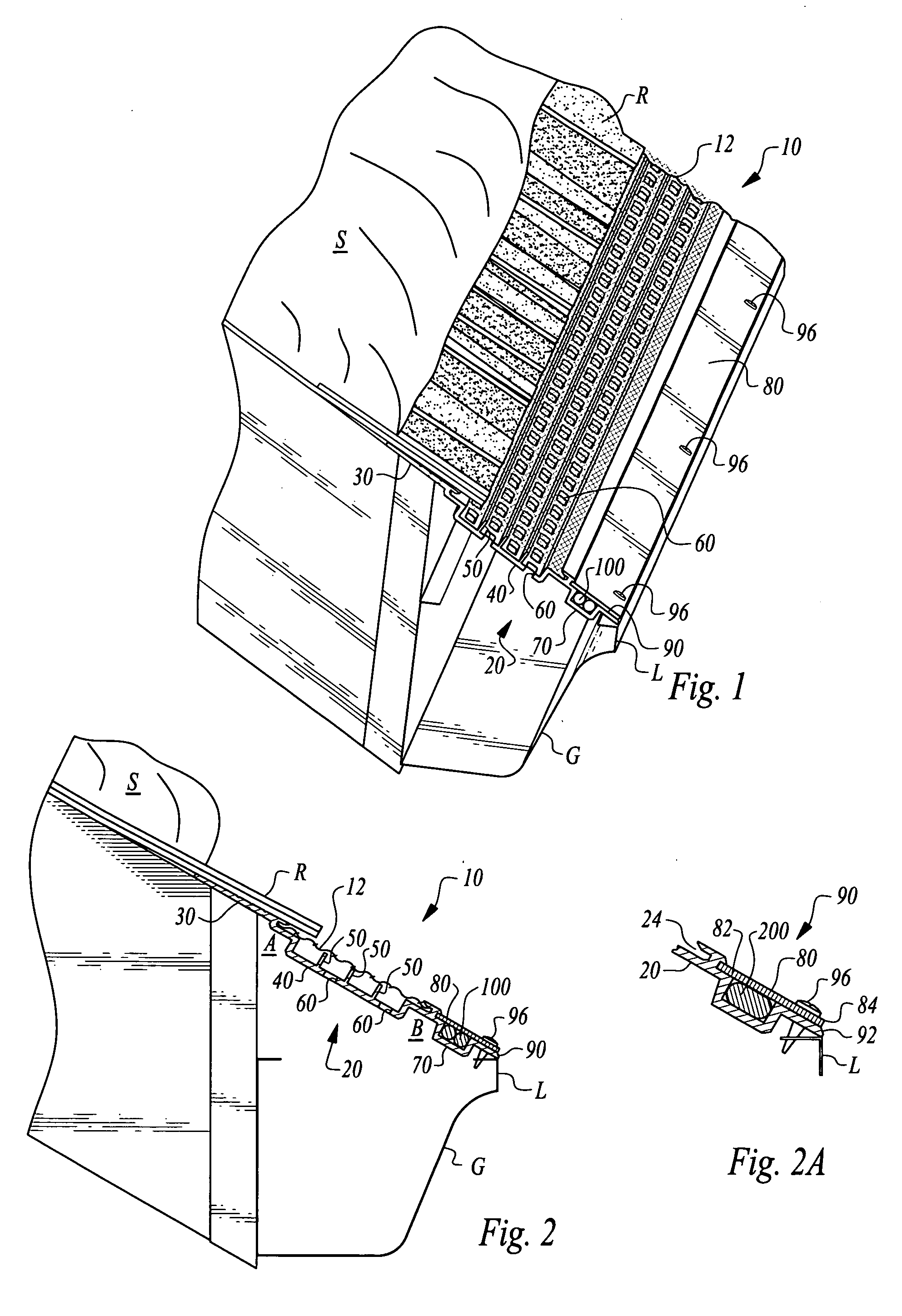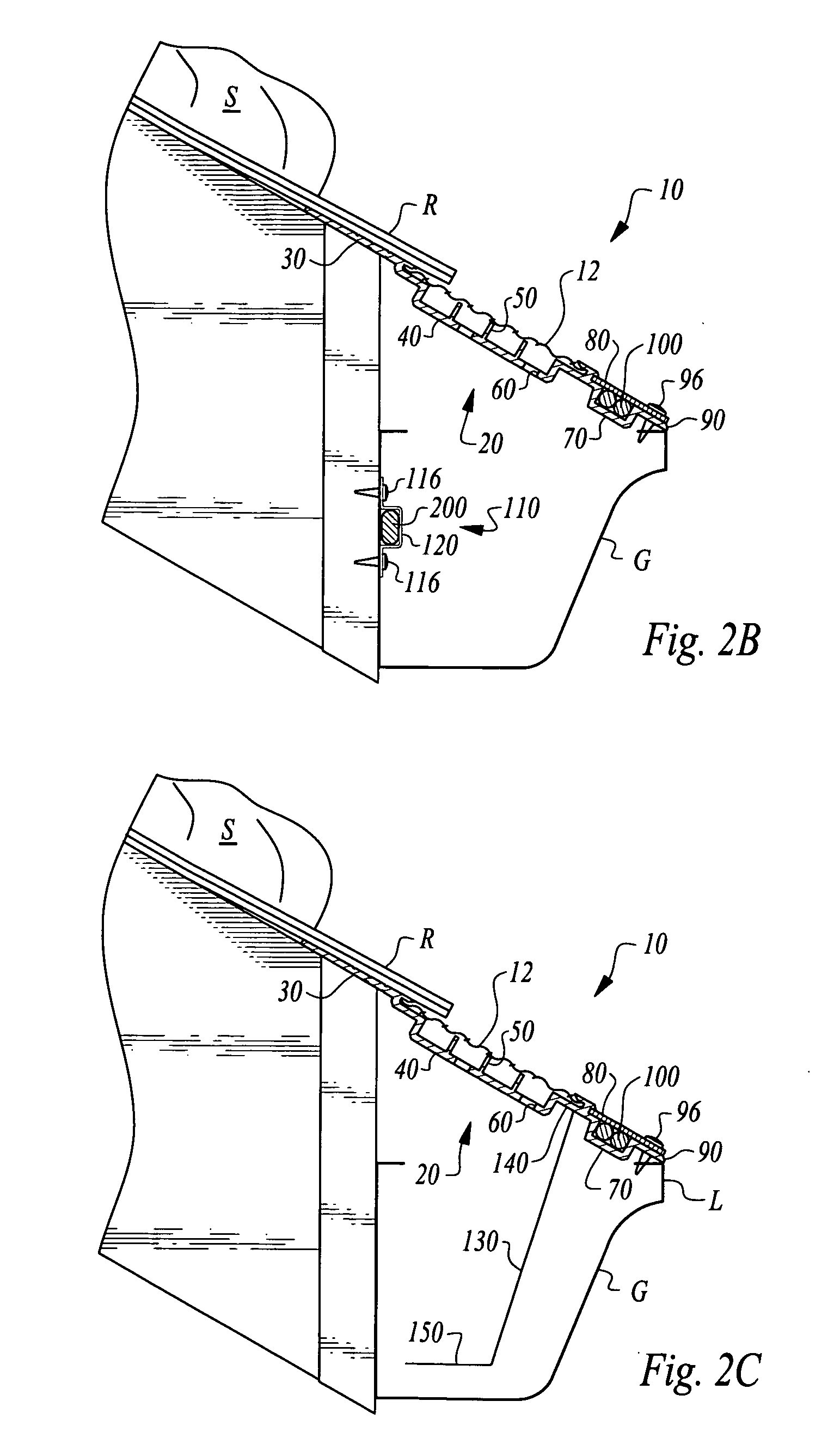De-iced gutter debris preclusion system
a gutter and debris technology, applied in the direction of ohmic-resistance heating, mechanical equipment, transportation and packaging, etc., can solve the problems of dangerously large icicles forming off the edges of gutters or other portions of the roof, serious deficiencies in the performance of such gutter guard systems, and ice dams that can not be removed. , to achieve the effect of preventing ice dams, reducing ice dams, and preventing icicle formation or damag
- Summary
- Abstract
- Description
- Claims
- Application Information
AI Technical Summary
Benefits of technology
Problems solved by technology
Method used
Image
Examples
Embodiment Construction
[0031]Referring to the drawings, wherein like reference numerals represent like parts throughout the various drawing figures, reference numeral 10 is directed to an assembly of parts forming the system of this invention (FIGS. 1 and 6). The assembly 10 fits upon a gutter G of a house H or other building adjacent an edge of roofing R thereof. The assembly 10 is particularly configured to melt snow S or other frozen water so that the gutter debris preclusion assembly 10 can remain open for passage of water therethrough and collection within the gutter G.
[0032]In essence, and with particular reference to FIGS. 1, 2 and 3, basic details of the assembly 10 providing the gutter debris preclusion system of this invention are described, according to a preferred embodiment. The assembly 10 includes a body 20 which is preferably substantially rigid and adapted to be located above a gutter G. The body 20 supports a screen 12 thereon which acts as a filtering layer having small openings therein...
PUM
 Login to View More
Login to View More Abstract
Description
Claims
Application Information
 Login to View More
Login to View More - R&D
- Intellectual Property
- Life Sciences
- Materials
- Tech Scout
- Unparalleled Data Quality
- Higher Quality Content
- 60% Fewer Hallucinations
Browse by: Latest US Patents, China's latest patents, Technical Efficacy Thesaurus, Application Domain, Technology Topic, Popular Technical Reports.
© 2025 PatSnap. All rights reserved.Legal|Privacy policy|Modern Slavery Act Transparency Statement|Sitemap|About US| Contact US: help@patsnap.com



